Why you can trust Tom's Hardware
To read about our monitor tests in-depth, please check out Display Testing Explained: How We Test PC Monitors. We cover brightness and contrast testing on page two.
Uncalibrated – Maximum Backlight Level
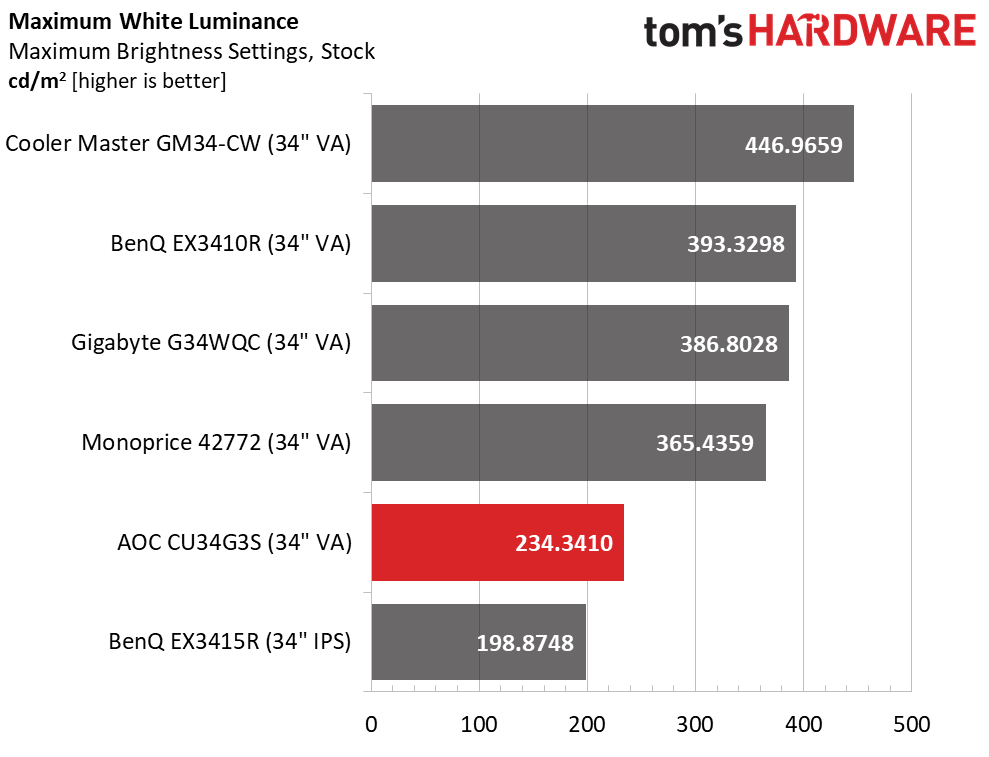
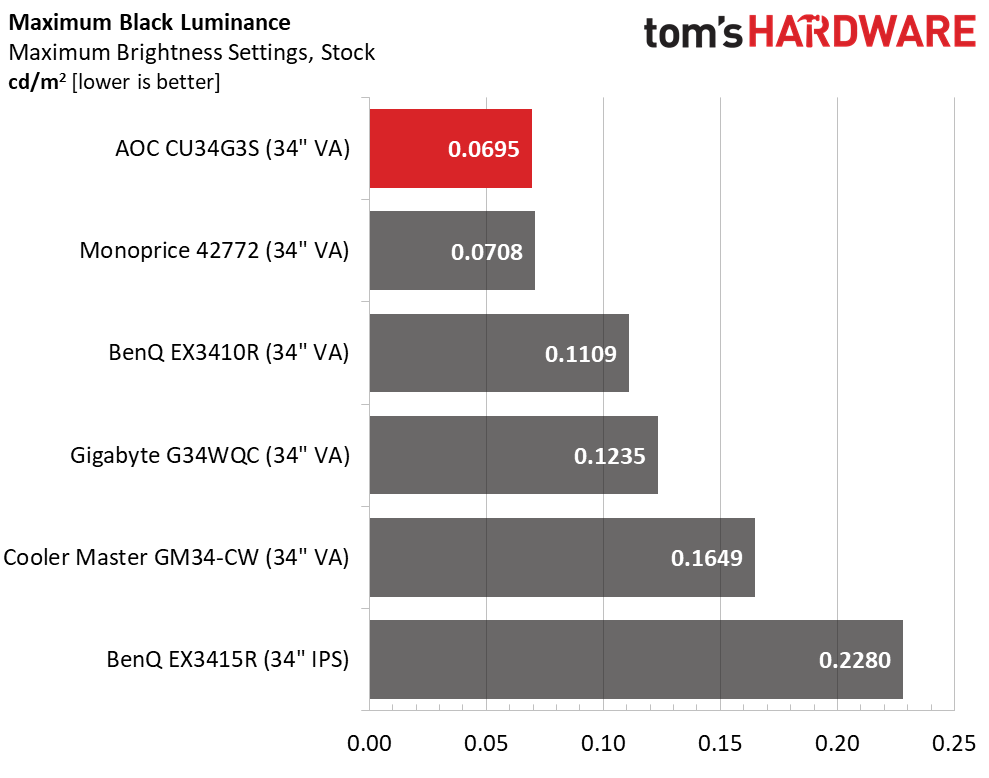
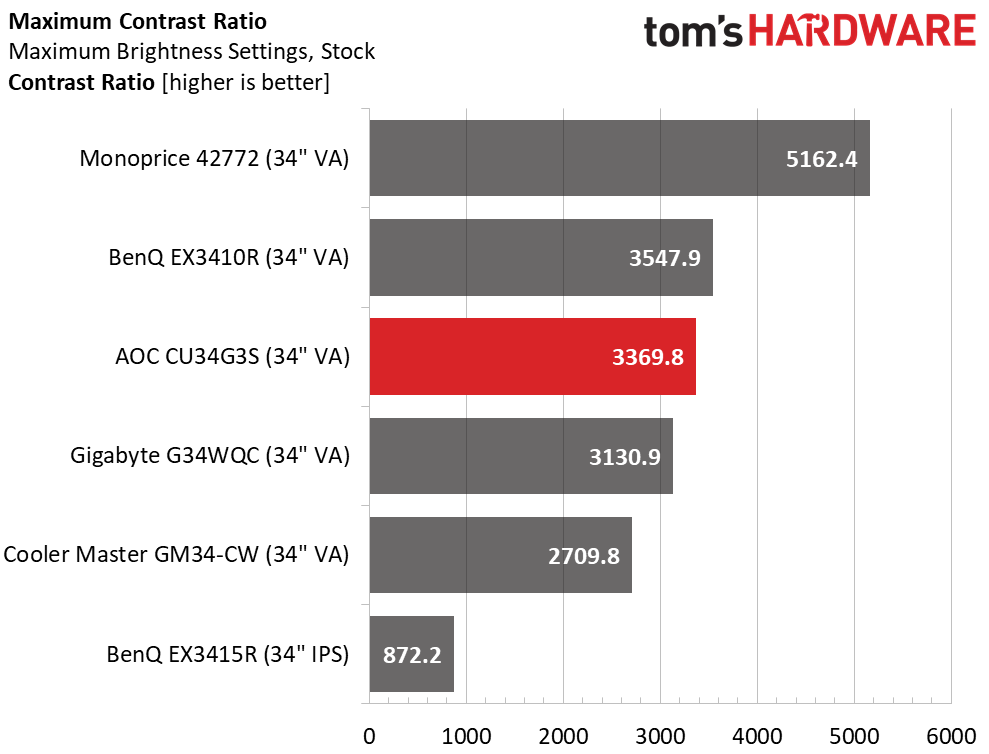
AOC rates the CU34G3S at 300 nits, but I could not find that value in any of the Eco or game modes. This isn’t the brightest monitor out there, but it is bright enough. Large screens like this don’t need a ton of light output for SDR content. The only bummer is that there isn’t any more brightness for HDR material.
With deep blacks, the CU34G3S delivers excellent contrast of over 3,300:1. That’s good enough for third place here though, in the larger picture, it is higher than average among all the VA panels I’ve tested.
After Calibration to 200 nits
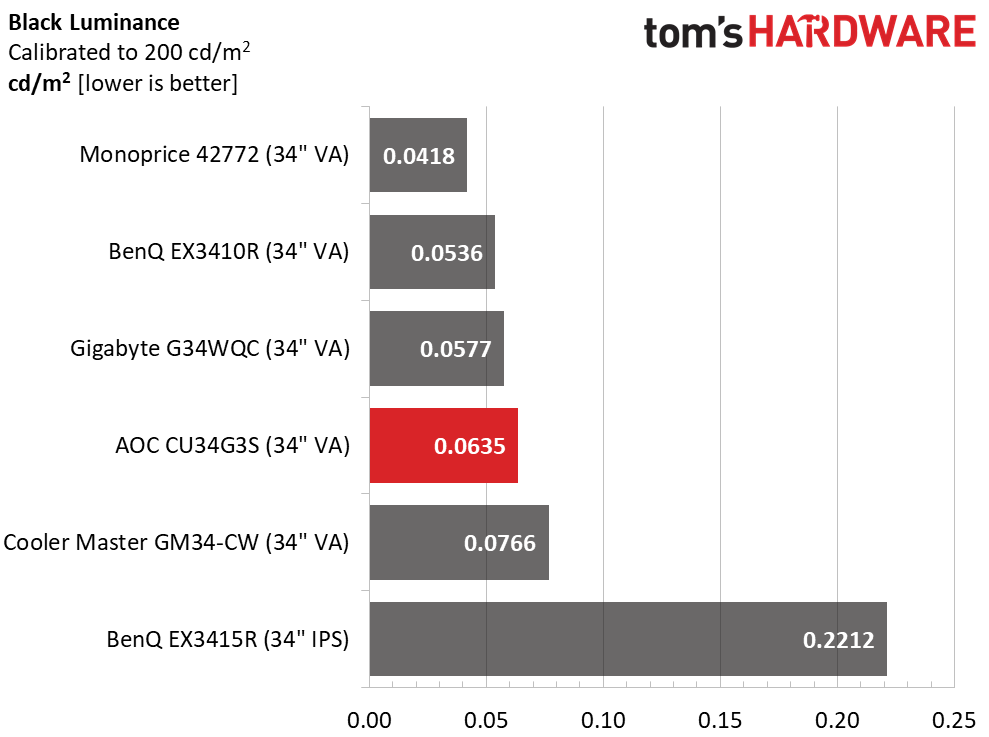
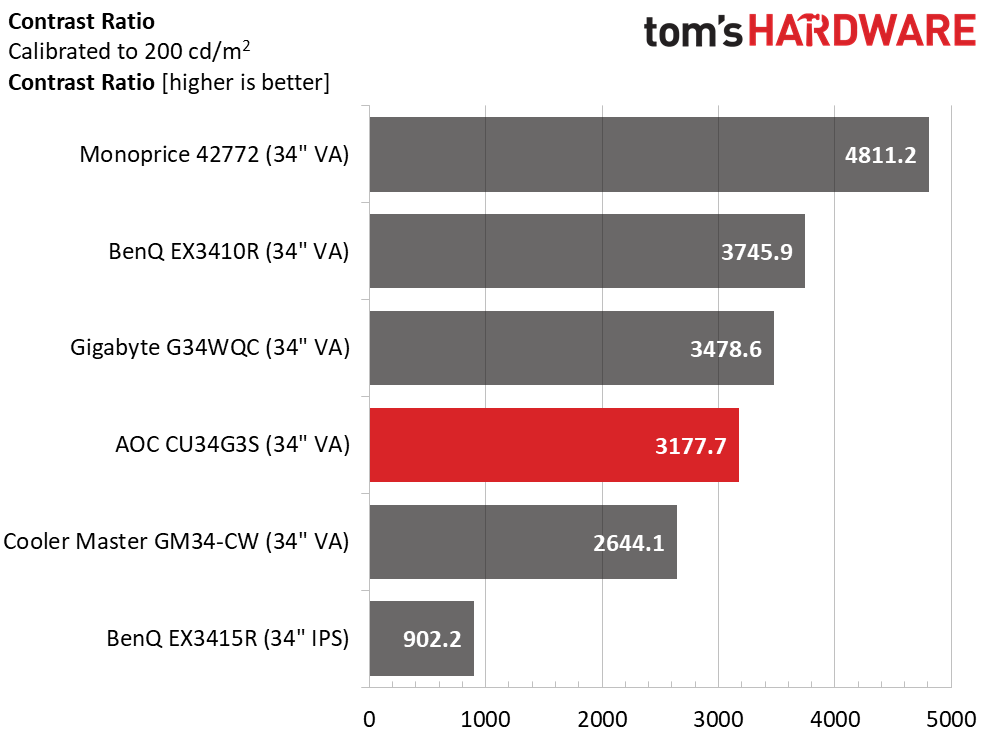
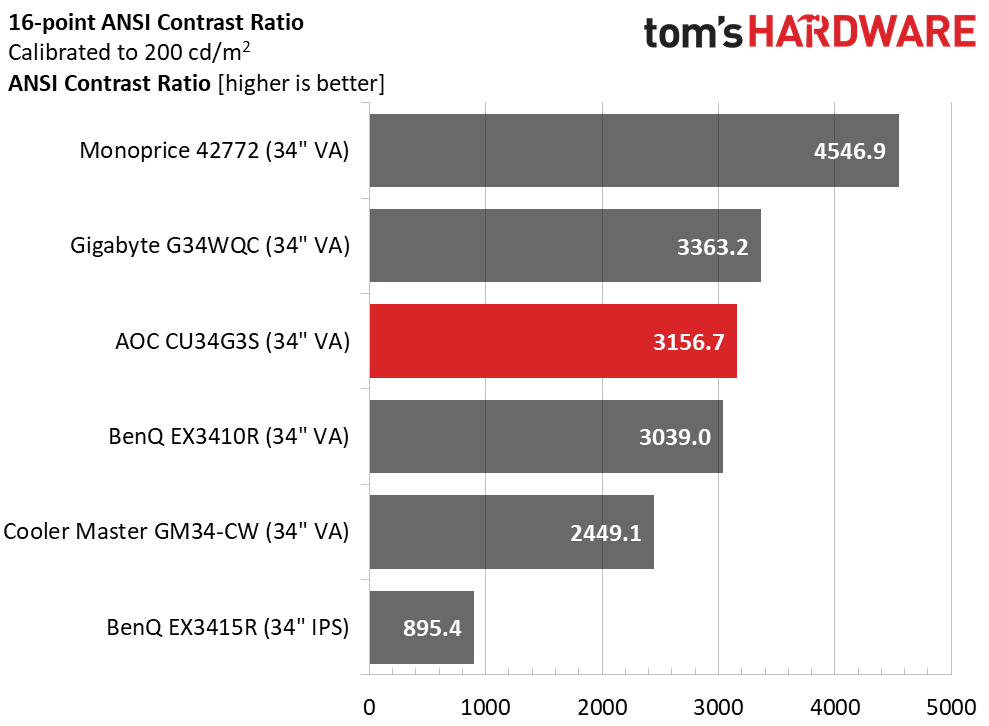
I didn’t calibrate the CU34G3S; a change in brightness to 200 nits was the only adjustment I made. The other monitors had their RGB sliders tweaked to remove grayscale errors. That slightly levels the playing field but still puts the AOC in a strong position. Obviously, the IPS-based BenQ is at a disadvantage here.
The CU34G3S’s ANSI contrast score stays over 3,100:1, which is excellent performance. Though it is a value-priced display, it doesn’t skimp on component selection or quality control. The image has lots of depth, true blacks with strong highlight and shadow detail, and well-saturated color.
MORE: Best Gaming Monitors
MORE: How We Test PC Monitors
Get Tom's Hardware's best news and in-depth reviews, straight to your inbox.
MORE: How to Buy a PC Monitor: A 2022 Guide
MORE: How to Choose the Best HDR Monitor
Current page: Brightness and Contrast
Prev Page Response, Input Lag, Viewing Angles and Uniformity Next Page Grayscale, Gamma and Color
Christian Eberle is a Contributing Editor for Tom's Hardware US. He's a veteran reviewer of A/V equipment, specializing in monitors. Christian began his obsession with tech when he built his first PC in 1991, a 286 running DOS 3.0 at a blazing 12MHz. In 2006, he undertook training from the Imaging Science Foundation in video calibration and testing and thus started a passion for precise imaging that persists to this day. He is also a professional musician with a degree from the New England Conservatory as a classical bassoonist which he used to good effect as a performer with the West Point Army Band from 1987 to 2013. He enjoys watching movies and listening to high-end audio in his custom-built home theater and can be seen riding trails near his home on a race-ready ICE VTX recumbent trike. Christian enjoys the endless summer in Florida where he lives with his wife and Chihuahua and plays with orchestras around the state.